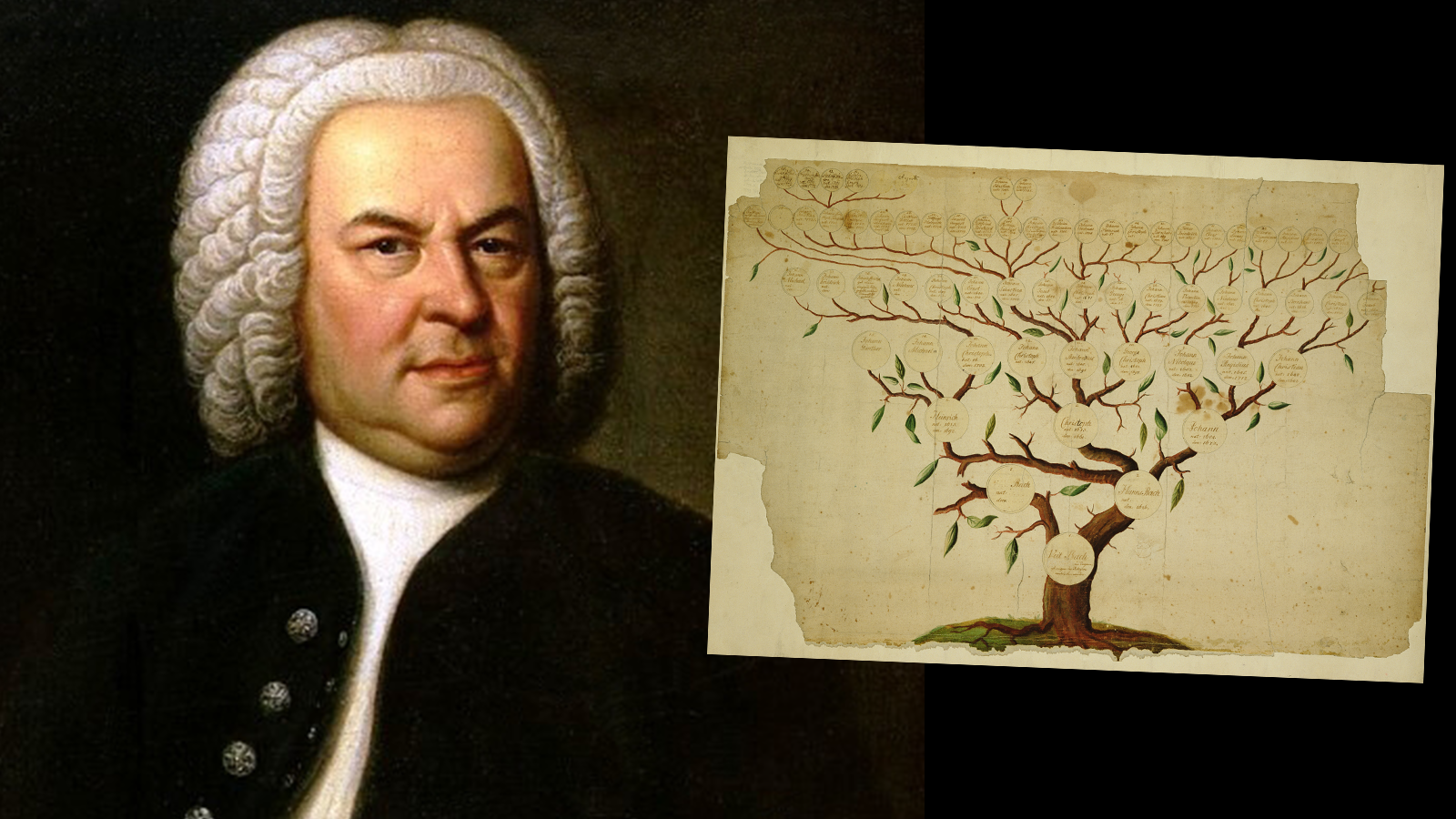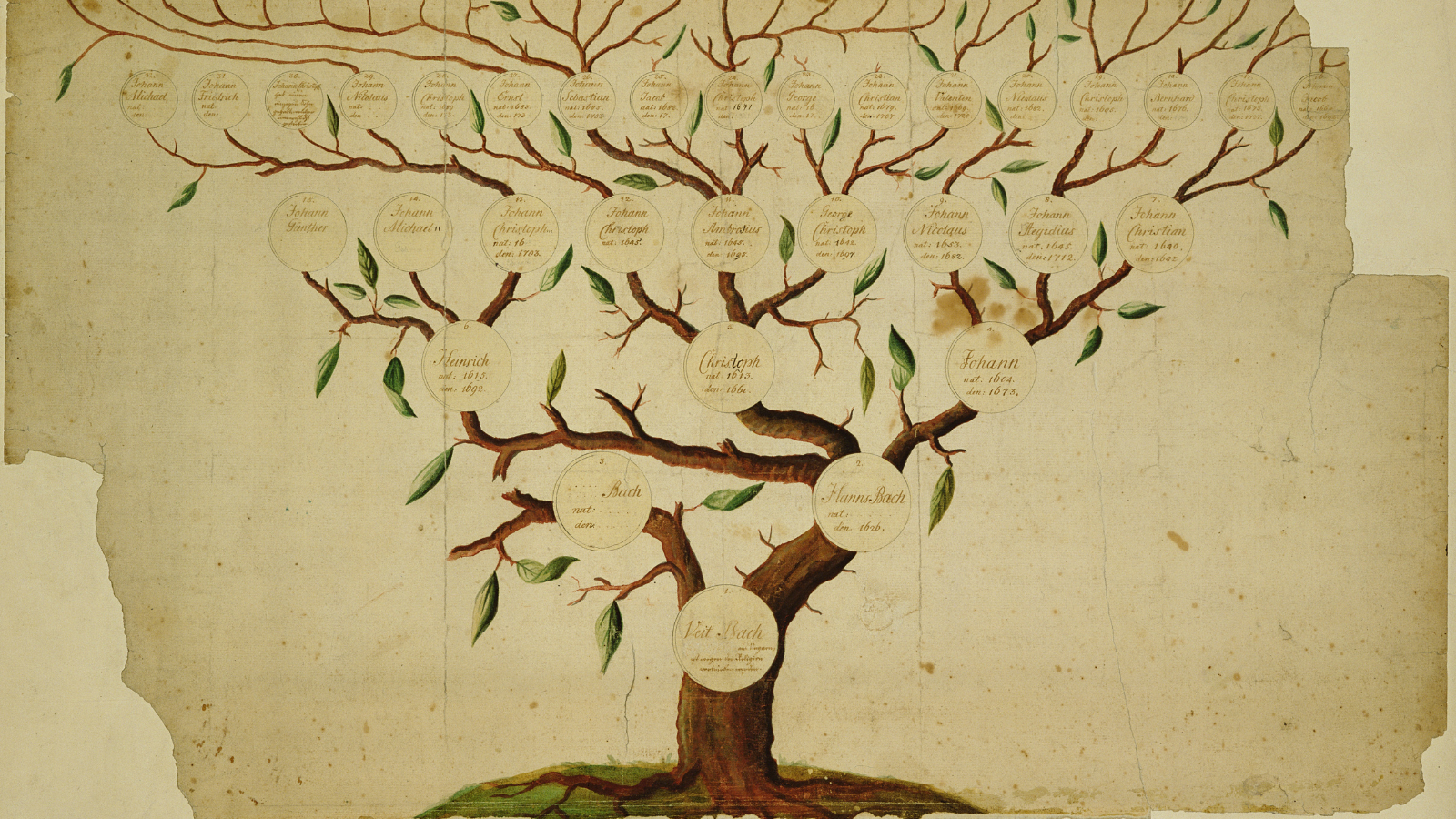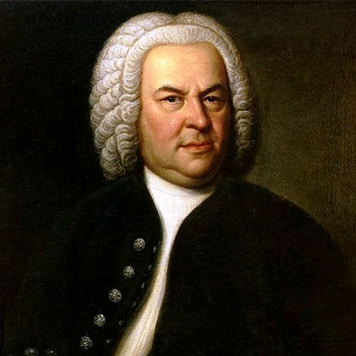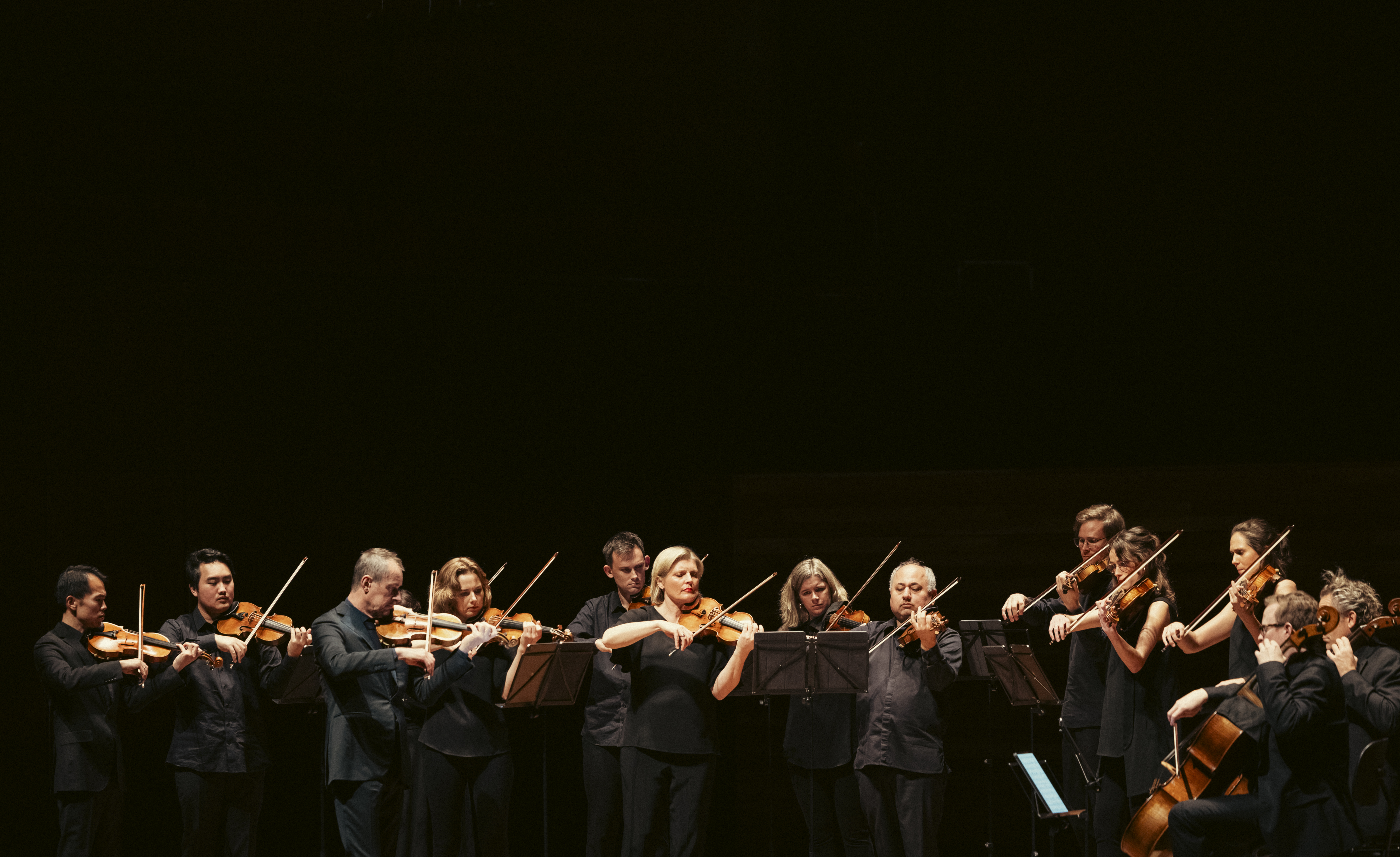
Families create their own mythologies, telling us the stories they want us to hear of their origins and aspirations. A sense of unity, coherence and dedication is felt powerfully in the accounts of the Bach family, which flourished in the 17th and 18th centuries in the region of Germany called Thuringia.
The obituary of its most famous member, Johann Sebastian (1685–1750) – compiled by his son Carl Philipp Emanuel (1714–1788) – begins with a clear statement of the family’s identity: “Johann Sebastian Bach belonged to a family whose every member seems to have had, as a natural gift, a fondness for music and ability in its practice. At least it is certain that from the founder of the family (Veit Bach) to the descendants of the seventh and present generation, all the Bachs have been devoted to music and further, with one or two possible exceptions, they have all made it their profession.”
It was due to Johann Sebastian himself that the details of the clan were drawn together. When he turned 50 in 1735 – an age with biblical significance in the Old Testament – he seems to have felt the need to tell the story of his ancestors and contemporaries.
He researched existing documents and updated the story of his remarkable musical family, which then numbered 83 members. Perhaps their musical abilities were no more significant than the skills of other trades that were passed down from generation to generation, but in the case of the Bachs there was a deeply symbolic aspect to the tale of its origin.

Image: Bridgeman Images
Veit Bach, the founder of the family, was a Lutheran breadmaker who lived in Hungary before he fled religious persecution under the Roman Catholic Hapburgs. He settled in Thuringia, where he could practice his faith, and continued to make bread. According to the 1735 family history: “What he most delighted in was a little cittern [a primitive violin] which he used to take with him to work to play while the mill was grinding. A pretty noise the pair of them must have made! However, it taught him to keep time, and that apparently is how music first came into our family…”
The powerful commitment to the Lutheran faith and dedication to the development of music as a craft are already central to the story, threads which run throughout the life’s work of Johann Sebastian. Veit Bach settled in Wechmar near Gotha and had three sons, of whom two were musicians. Johannes (1604–1673) became known as “The Wechmar Bach” and one of his three sons was Heinrich (1615–1692), the earliest of the composers whose music we will hear in this program. His brother was Bach’s grandfather Christoph (1613–1661).
All these Bachs were town musicians around Thuringia, in places such as Eisenach where JS Bach’s father Ambrosius (1645–1695) worked and where his eight children were born. In the service of the town, these musicians would have mastered a wide variety of musical skills, contributing to both the sacred and the secular life of the place. Heinrich worked in the towns of Schweinfurt, Erfurt and Arnstadt – the last of which, not coincidentally, was where Johann Sebastian had an early post and where the Bach family’s music was heard.
There is a certain defensiveness in the statement that “these honest Thuringians were so content with their fatherland and their circumstances that never once would they venture upon following their fortune far away.” That became less true as the mobility of the mid 18th century took over from the limited travel of the previous period, in which it was exceptional that the young Johann Sebastian walked for miles from his home to Lübeck in 1705–6 to hear Dietrich Buxtehude at the organ.
Later accounts possibly embroider the sense of unity in the clan but have a touching sense of togetherness. “The different members of this family had a very great attachment to each other,” writes an early biographer of Johann Sebastian, J.N. Forkel. “As it was impossible for them to live in one place, they resolved to see each other at least once a year, and fixed a certain day, upon which they were all to appear at an appointed place … their amusements, during the time of their meeting, were entirely musical. Since the company consisted of none but cantors, organists and town musicians, first of all when all were assembled, a chorale was sung. From this devotional opening they proceeded to jesting … they sang folksongs, the contents of which were partly comic and partly indelicate … all together and extempore … they called this a quodlibet … and enjoyed a hearty laugh at it.”
The reference here to combining folksongs in a “quodlibet” finds a clear echo in one of J.S. Bach’s greatest works, The Goldberg Variations, whose last variation before the return of the Aria is just such a quodlibet, albeit raised to the highest form of artistry and wit.
Another son of the original Veit, Caspar, was a carpet maker. His children included Johann Ludwig Bach (1677–1731) whose strong music opens this program. Sebastian clearly respected Johann Ludwig greatly, as he often performed his cantatas in combination with his own during his years in Leipzig from 1726 and later, perhaps when his enthusiasm began to flag for writing such demanding new works every week.

The most significant composer of the family before Johann Sebastian was undoubtedly Johann Christoph (1642–1703). His music was acknowledged as “profound” by Johann Sebastian and Carl Philipp Emanuel made a special note in the Obituary to say “this is the great and expressive composer”. The lovely wedding cantata – from which today’s Ciaconona movement is extracted – is an example of that lyrical skill. It shows another set of family links, because it survives in a manuscript written out with commentary by Bach’s father Ambrosius and might have been intended for the marriage of his twin brother.
One of the most visible proofs of the tight-knit nature of the Bach family is how they copied, circulated and preserved their work between themselves. Ambrosius may have been the origin of the collection known as the Alt-Bachisches Archiv, a remarkable collection of vocal pieces which Johann Sebastian acquired and preserved, handing it on to Carl Philipp Emanuel after his death. The music was eventually published in 1935 but the original manuscripts were lost during World War II.
They were dramatically rediscovered in the Ukrainian city of Kyiv in 1999 and returned to Berlin in 2002 with a wealth of other Bach family material. Several generations of the family are beautifully linked in a copy by old Heinrich of the vocal parts of the funeral motet Lieber Herr Gott, which was composed by Johann Christoph and then edited by Johann Sebastian for performance at the very end of his life in 1749–50.
Johann Sebastian’s death marked the end of one era of the Bach family. The world was changing dramatically. Sebastian had already adapted to new circumstances, becoming involved Leipzig’s secular music-making by writing music for the Collegium Musicum of the town in the 1730s. It now seems likely that the famous Concerto for Two Violins, with its amazing concentration, eloquence and economy of expression, was written in this period of his maturity. In his later years he published music to sell in Leipzig and was an agent for other composers, and he even became an agent for the new keyboard instrument, the fortepiano, made by his friend the organ-builder Gottfried Silbermann.
Johann Sebastian’s sons, whom he had trained to follow in the family path, were forced to find their fortune beyond Thuringia. Wilhelm Friedemann (1710–1784), his first son, worked in Halle, Brunswick and Berlin, but despite his compositional originality he was unreliable and increasingly unsuccessful.
Johann Christoph Friedrich (1732–1795), son of Johann Sebastian and his second wife Anna Magdalena, worked in Bückeburg and his secular cantatas – such as Die Amerikanerin, from which we hear an extract – were highly praised. A great deal of his music has been lost and he never received his due from history.
Carl Philipp Emanuel was the most influential in the second part of the 18th century. He found himself in Berlin at the court of Frederick the Great, the enlightened king who was a keen flute player and composer. Though his status at court was lowly, Carl Philipp Emanuel was a constant collaborator with Frederick in chamber music performances and had the freedom to develop his own highly individual composing style, which matched the freedom of a newly emerging consciousness.
His invitation to his father to come to Berlin resulted in the creation of The Musical Offering, written on a theme reputedly given to Johann Sebastian by Frederick the Great, though almost certainly polished for publication. This work is a fascinating amalgam of old and new, with abstruse puzzle canons and a magnificently eloquent six-part Ricercare alongside new music for the fortepiano and a galant trio sonata. In a single compilation, Johann Sebastian expresses in dramatic form a revolution that was overtaking the music of the mid 18th century.
With Carl Philipp Emanuels’ music we are in a very different world of expression based on personal, intense feeling that is revealed to the audience. In his popular guide to keyboard technique, Essay on the True Art of Playing the Keyboard, he takes the spirit of individual performance into a new realm. “A musician cannot move others unless he himself is moved,” he says. “He must of necessity feel all the affects that he hopes to arouse in his audience … in languishing, the performer must languish and grow sad. Thus will be the expression of the piece be more clearly perceived by the audience.”
This was radically different from Johann Sebastian’s approach to his musical task; which is not to say that Johann Sebastian’s music lacks feeling, but rather that its depth is not overt. The traveller and writer Charles Burney writes that when Carl Philipp Emanuel played, “he looked like one inspired. His eyes were fixed, his under-lip fell, and drops of effervescence distilled from this countenance”. That kind of eloquence emerges in the slow movements of his pieces, such as the Cello Concerto in A major.
This is the origin of the concept of the performer as a demonstrative virtuoso, which led directly to the great artists of the following century, from Paganini to Liszt, who gloried in that personal grip over their audiences. Carl Philipp Emanuel’s improvisatory keyboard fantasias and sonatas had a great influence on Mozart, who declared that “he is the father, we are the children”. Carl Philipp Emanuel wasn’t the only Bach to impress Mozart: there is a famous anecdote of his hearing a Johann Sebastian motet sung in Leipzig in the 1780s and crying out “Now here’s something from which we can learn!” When he travelled to London as a young prodigy in the 1760s, Mozart also absorbed the music of Johann Christian Bach (1735–1782), who went to Italy, became a Catholic and settled in the service of Queen Charlotte.
Johann Christian’s style – open and predominately cheerful – suited the temper of the times in London and its galant poise led more directly to the classical style of the next generation than did Carl Philipp Emanuel’s intensity.
Mozart clearly learned from it, and paid a direct tribute to Johann Christian by echoing one of his themes in Piano Concerto in A major. This is part of a set which perfectly summed up Mozart’s approach to his art. As he explained to his father, these concertos “are a happy medium between what is too easy and too difficult; they are very brilliant, easy on the ear and natural, without being vapid. There are passages here and there from which connoisseurs alone can derive satisfaction, but these passages are written in such a way that the less learned cannot fail to be pleased, without knowing why.”
Thus music moved from the dominance of the church and court into the public concert hall and the marketplace – the critical forces in its future. The town musicians of Thuringia gradually gave way to new entrepreneurs in tune with the taste of rising middle-class audiences. The Bach clan failed to regenerate itself in the next generation and as the genealogy evaporated, even the family name vanished from sight.
The name lived on in another way, as it was translated into a memorable four-note musical theme that Johann Sebastian used towards the end of his life. B-A-C-H became notated as B flat, A, C, H (which is B natural). Johann Sebastian uses this theme in several compositions, notably in the famous incomplete work The Art of Fugue. Beethoven planned an Overture on it that he never completed. Composers in a more chromatic era found this theme a fruitful source of inspiration – notably Schumann in his fugues, one of which we hear – and also Liszt, Schoenberg, Rimsky-Korsakov, Bartók and many others up to the contemporary Sofia Gubaidulina. Thus the present pays its homage to the past.
Connoisseurs and composers kept the music alive after the death of Johann Sebastian. In our historically conscious age, the Bach name was increasingly invoked by the revival of their music and gradually – through performances by enthusiasts such as Mendelssohn in the 19th century – the wider public came to enjoy and to venerate its achievements. Through the broadening of the repertory, the lesser-known members of the family were revived as well, leading to today’s extensive scholarly and practical explorations of the Bach dynasty’s music. The local achievements of a Thuringian family have been translated into one of the world’s iconic collections of great music.
Bach, featuring music by JS Bach alongside works by CPE Bach, JCF Bach, JC Bach, H Bach, JL Bach and Mozart, tours to Melbourne, Adelaide, Perth, Sydney and Canberra, 18-29 June. Click here to book tickets.
